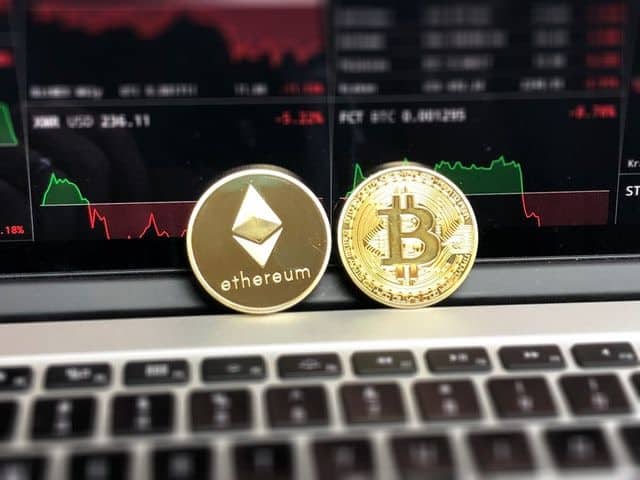Cybersecurity Trends to Keep an Eye for in 2018
The best thing we can do NOW to create a better FUTURE is to take correction action when we get the signals.
Cybersecurity is one industry that has become increasingly busy over the past few years. From hacking into banks to installing backdoors in performance boosting software, hacking methods have evolved equally with technology.
The current trends of cybersecurity indicate that, with passing time, cybersecurity crimes will become far sophisticated and difficult to track. Enterprises and individual users face the same amount of risk and are prone to data loss, financial losses and even loss of reputation.

From what we can round up, the future of cybersecurity will be shrouded in mystery. Loophole and vulnerabilities will come to light only when hackers make way with them. To cite an example, the massive scale WannaCry ransomware attack that left Windows users crippled for weeks long and some with total data loss.
This blog is a bird’s eye view of what the future of cybersecurity holds. It captures the trends in the industry as is seen, experienced and felt by experts. Understanding these trends will help us prepare, streamline and prepare ourselves for the looming digital future.
Massive Demand For Cybersecurity Specialists
Amidst these growing concerns, there is also another worry that is plaguing tech corporations. The widening gap between cybersecurity skill demand and supply. There are not many IT security professionals as there are developers and architects. The gap may have been caused maybe because cybersecurity was never given the due importance that it deserved.
However, all that is changing. Cybersecurity and its staffing are one among the top priorities of tech corporations today. As enterprises continue to generate massive amounts of data, the need to secure them will become inevitable. Thus, there will be a spike in the demand for cybersecurity specialists. Palo Alto Research Centre (PARC) – the premier research agency estimates the demand for cybersecurity specialists by 2019 to be in the ballpark figure of 6 million globally (Source: CSO Online).
Cloud Security Will Rise In Priority
At least half of the global corporations have a cloud-first or cloud-only policy. At least 90% of enterprises use a cloud solution in some way in their routine functions. These are the findings of an annual survey conducted by North Bridge, a Venture Partner firm.
The rapid scale of cloud adoption will also lead to the need for securing these cloud solutions. Cloud security experts will help enterprises choose between owned and shared cloud services and how they can be secured from external threats. Enterprises will also be seen drawing definite cloud security practice protocols to secure their data and applications from misuse or breaches.
IoT Insecurities Will Lead To DDoS Attacks
IoT is a Pandora’s box. While it brings with it a host of disruptive benefits, the insecure endpoints or things can be a juicy target for hackers. As a matter of fact, hackers have already hacked into connected homes by taking advantage of the loopholes in other Things connected to the network.
As more and more users blend into the IoT lifestyle, there would be a rise in DDoS attacks. Hackers will launch DDoS attacks to disarm connected ecosystems like connected homes, connected traffic, connected networks, etc. of their security systems. Exploiting the security downtimes, they penetrate the systems and will steal data, financial assets and so on. As a result, there will be increased spending on IoT security and protection.
Phishing emails will still remain relevant
As long as emails are in use, the menace of phishing emails will never cease. The Anti-Phishing Working Group’s (APWG) “Phishing Activity Trends Report” reports a 65% increase in phishing attacks since 2015. Phishing emails which look identical in look and feel to genuine emails trick victims into submitting confidential information that can be misused later.
As phishing emails increase in instances, the pressure will mount on enterprises to take corrective actions like setting up digital signatures, SSL certificates for encryption, etc. to ensure secure exchange of information. Moreover, hackers are getting adept at sophisticated social engineering skills. This means phishing emails will ask for other data which a user might pass off as non-essential like birthday, favorite pet, first school, etc. based on which their passwords can be hacked.
Cyber-wars Between Nations
While the fear of nukes and biochemical usage lurks on one side, there is a new non-invasive, yet powerful strategy that seems to have become practical for global wars. Cyber-wars. Nationals are infiltrating enemy nations through the use of bots, ransomware and similar damaging programs.
The aim of this cyber-infiltration is not to steal any sensitive information, but, to damage or cripple the enemy nation’s information flow for a significant period of time. In most cases, it also helps in striking down the Internet connectivity for days long as a result of which National Domestic product suffers. This translates into a long-term competitive disadvantage in the world market. The recent WannaCry ransomware was speculated by many to have originated from a certain Asian country that has enmity towards the western world.
Going forth, such kind of instances will increase in number, which will make the need for cybersecurity from a granular level very important for end users.
The Future Ahead
From the trends forecasted for 2018, it can be easily summed up that, cybersecurity will no longer be a topic that is neglected. Enterprises and private users are increasingly investing in security solutions and software to safeguard themselves from the growing perils of cybersecurity.
From anti-virus software to enterprise-grade firewalls and SSL certificates for encryption certificate, the range of cybersecurity measures will also keep growing with the sophistication of cybersecurity attacks.
Perhaps, technologies like Artificial Intelligence and Machine Learning might also grow into serious roles to combat the challenges in online security.




